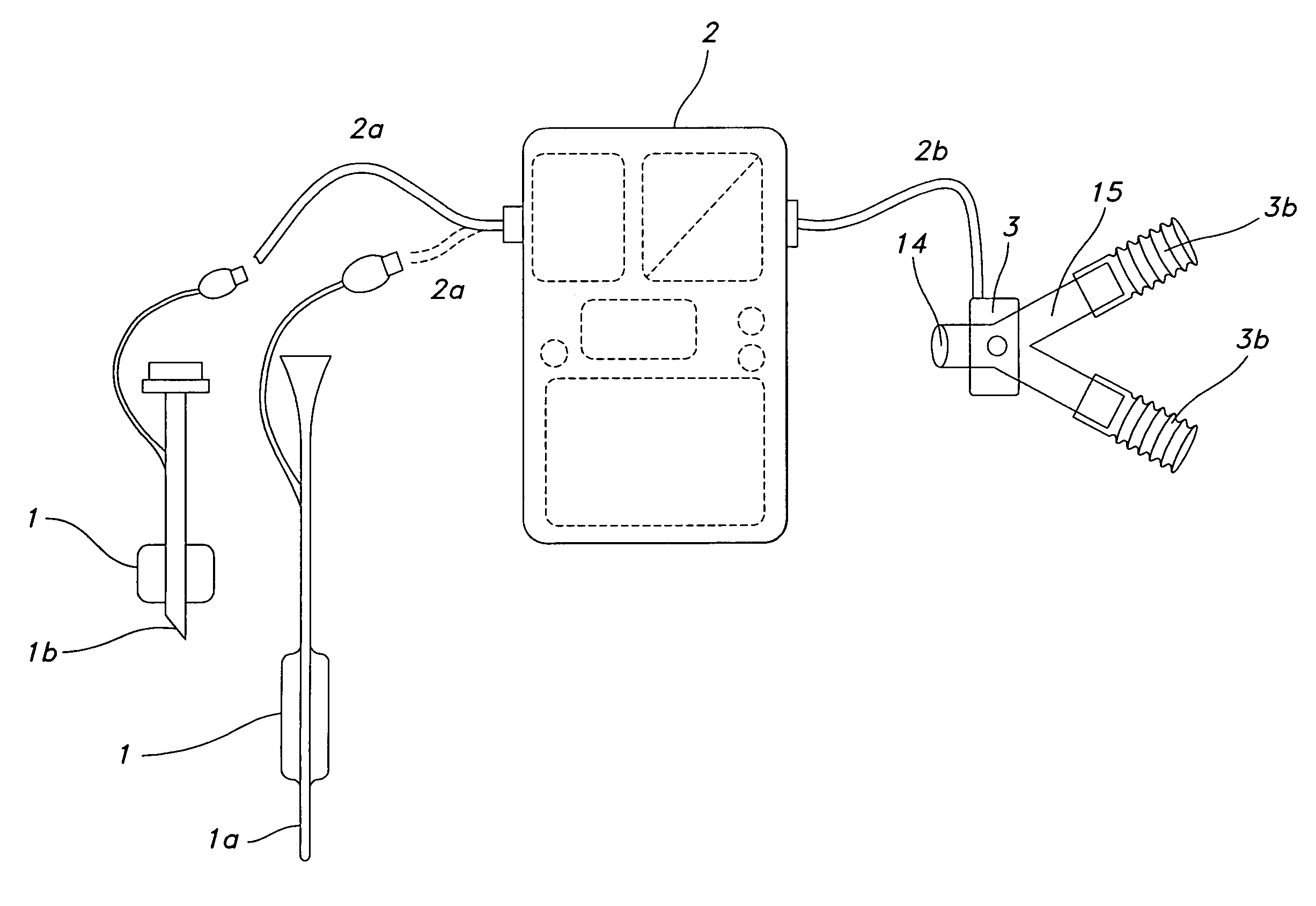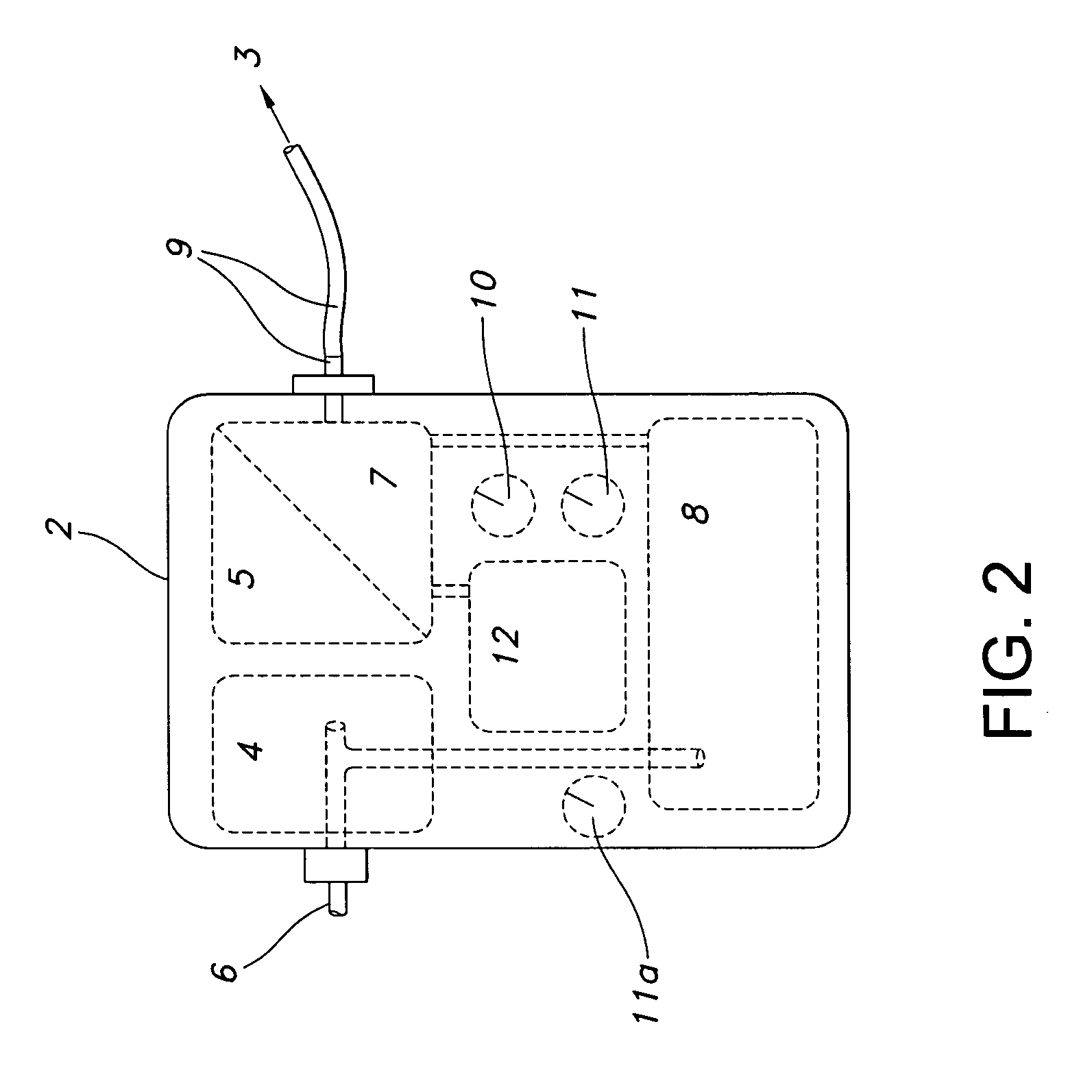Method of triggering a ventilator
a ventilator and a technology of a trigger device, which is applied in the field of triggering a ventilator, can solve the problems of affecting the operation of the operating means/releasing device of the valve, affecting the successful separation of the patient from the intubation tube, and affecting the patient's recovery, etc., so as to achieve the effect of simple operation and accelerate patient weaning
- Summary
- Abstract
- Description
- Claims
- Application Information
AI Technical Summary
Benefits of technology
Problems solved by technology
Method used
Image
Examples
Embodiment Construction
[0027]The following describes a technology / device developed to accelerate and better control the transition from controlled to assisted (or supported) ventilation modes. By triggering ventilator support on the basis of the detection of relative changes in the intra-chest pressure (intra-thoracic pressure) of a patient, patients can be converted to assisted breathing significantly earlier, and in a manner not requiring any direct communication between the inventive device and the ventilator. As such, the invention represents a relatively simple, easy to apply, universally compatible device for more efficient patient weaning.
[0028]The beginning of a breathing cycle can be detected either by a chest volume expansion associated pressure change inside the cuff of a tracheal or tracheostomy tube. Alternatively, an intra-thoracic pressure change can be detected by a pressure sensing element located in the esophageal section of a naso-gastric tube (NG tube).
[0029]Tracheal or tracheostomy tu...
PUM
 Login to View More
Login to View More Abstract
Description
Claims
Application Information
 Login to View More
Login to View More - R&D
- Intellectual Property
- Life Sciences
- Materials
- Tech Scout
- Unparalleled Data Quality
- Higher Quality Content
- 60% Fewer Hallucinations
Browse by: Latest US Patents, China's latest patents, Technical Efficacy Thesaurus, Application Domain, Technology Topic, Popular Technical Reports.
© 2025 PatSnap. All rights reserved.Legal|Privacy policy|Modern Slavery Act Transparency Statement|Sitemap|About US| Contact US: help@patsnap.com



